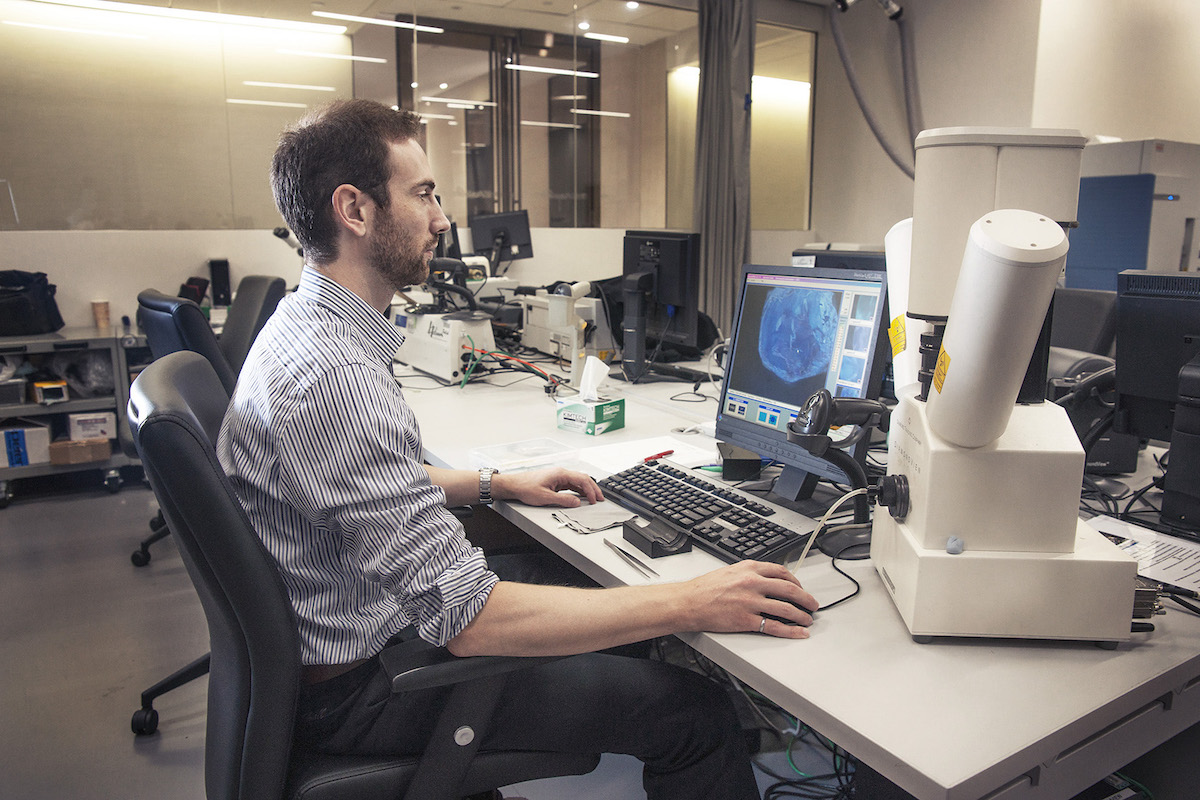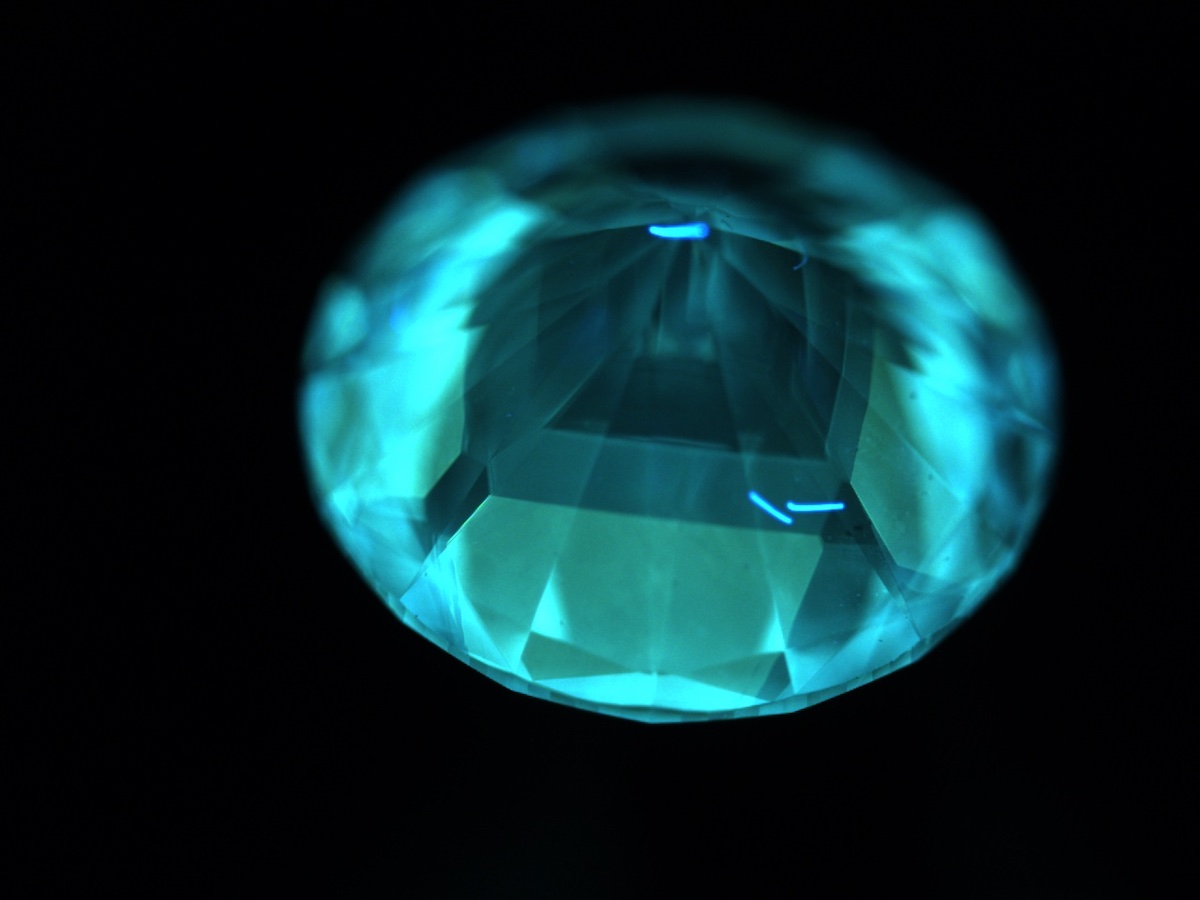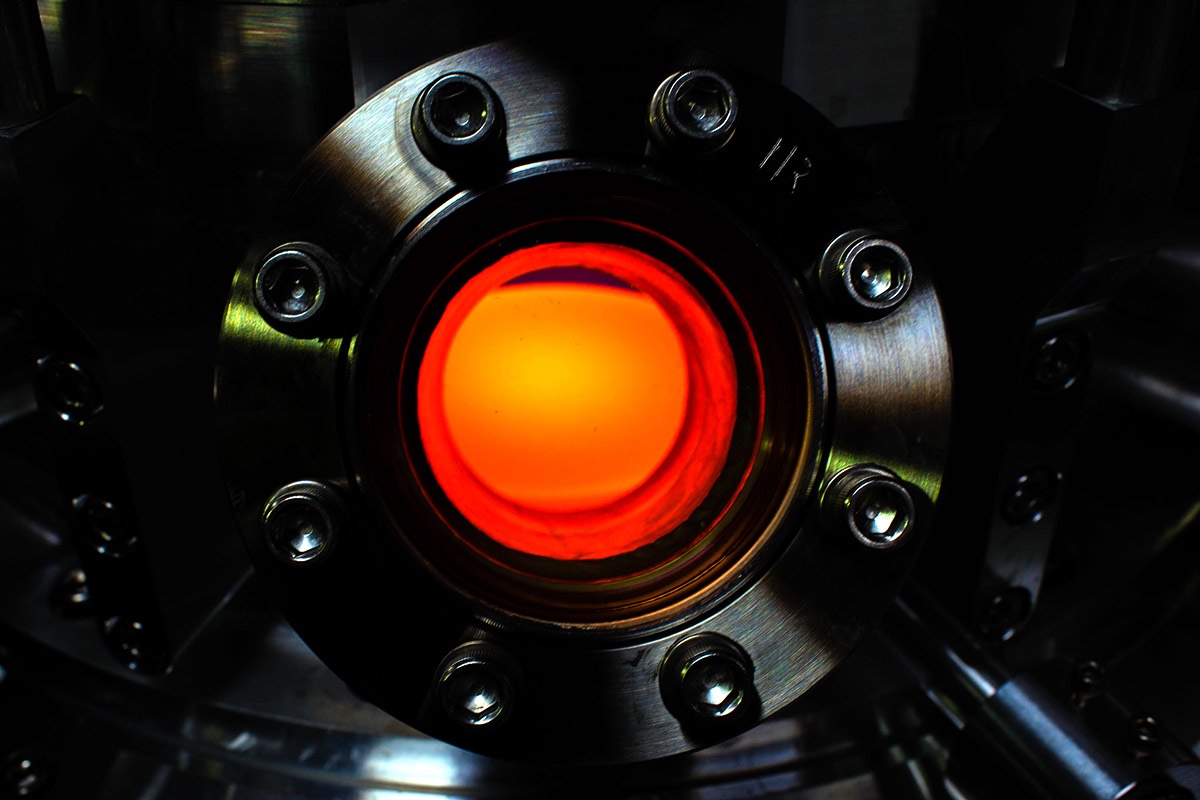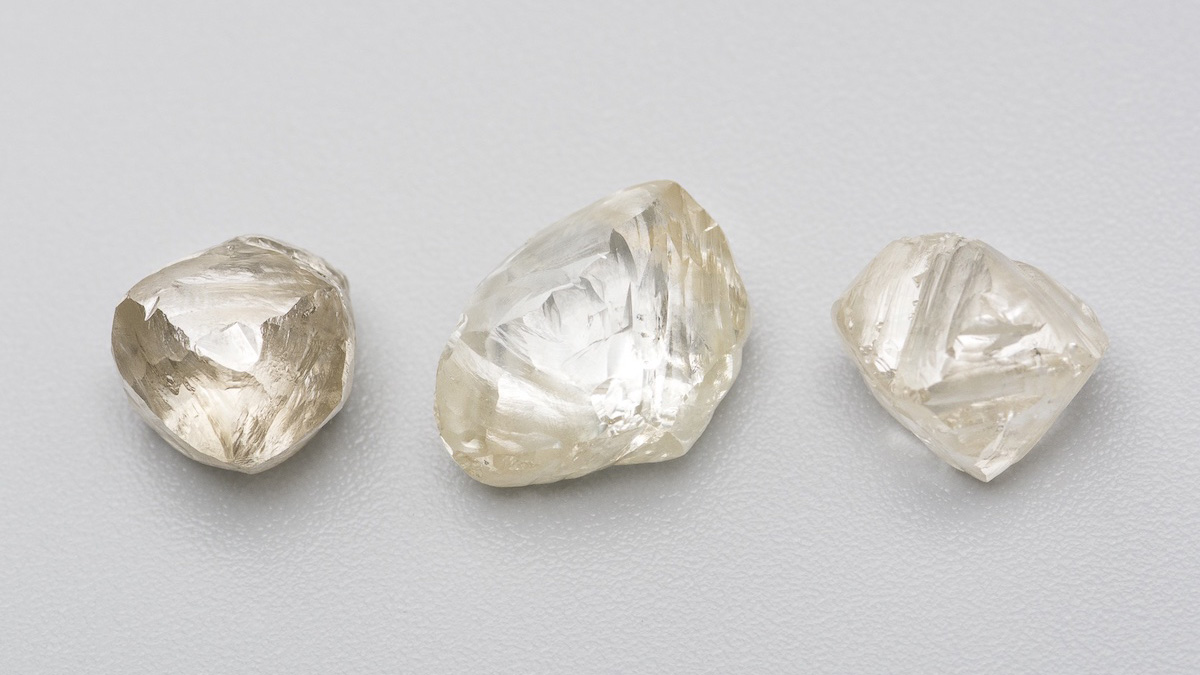How You Can Be Confident That You’re Buying a Natural Diamond
Find out how your jeweler is making sure your diamond is all natural and one-of-a-kind.

Used in jewelry for centuries, natural diamonds are among the earth’s most precious gifts. And now that lab-grown diamonds are also on the scene, lovers of natural diamonds want to be extra sure they are purchasing a diamond that was not manufactured in a laboratory.
The natural diamond industry has answered the call, creating stringent supply chain protections, introducing new testing equipment and working with governments to legally define diamonds. It’s all in the name of protecting consumers and giving them confidence in their purchases. Here we explain all the ways the industry distinguishes between natural and lab-grown diamonds.
Testing: The Key to Confidence

High-tech labs test and grade diamonds worldwide, including the Gemological Institute of America (GIA), International Gemological Institute (IGI), Gemological Science International (GSI) and American Gem Society (AGS). These companies grade natural and lab-grown diamonds and use the most sophisticated equipment to identify them. Avi Levy, President of IGI North America, says, “Because of the closeness, in terms of the makeup of the stone, it’s best to get them screened with machinery.” Diamonds can be tested multiple times as they move through the supply chain, including after cutting and polishing, when a jewelry manufacturer acquires the diamonds and when a retailer receives a finished piece of jewelry.
These labs do everything from the initial certification of diamonds to certifying a retailer’s entire inventory and checking parcels of tiny melee diamonds used in pavé settings when a jeweler wants to be sure they received what they ordered.
In addition to certifying diamonds, labs want to be sure there are no mix ups after they leave the lab. Several labs, including GIA, IGI and GSI, laser-inscribe every lab-grown diamond they certify on the girdle to indicate that they are lab-grown along with the report number. The laser inscription is invisible to the naked eye and doesn’t affect a diamond’s appearance, but it can be seen at ten times magnification. Therefore, once a lab-grown diamond has been certified, it’s impossible for it to be misidentified as natural by anyone with simple magnification tools. Many labs also use different colors for their lab-grown diamond reports, so there’s no way someone can mistake the report for a natural-diamond report.

GSI grades both diamonds and finished jewelry for the trade. A few years ago, when lab-grown diamonds began to be used more frequently in jewelry, retailers asked GSI to create a program to test finished jewelry to ensure that lab-grown diamonds hadn’t been accidentally mixed into the final product. Debbie Azar, President of GSI, says they created “a mechanism to screen and test all different kinds of jewelry in mounting, in all sizes, at all different price points.” This is important because many small diamonds don’t come with certificates from major labs. GSI can test everything from a 0.25 carat diamond pendant with one point diamonds surrounding it to the finest engagement rings. “The point was to be able to do this in jewelry in a mounting as the last step before the jewelry would get shipped from the manufacturer to the jewelry retailer,” she says. “We screen and test finished jewelry for some of the largest retailers in the world to ensure that everything that gets through their doors is what they’re saying it is. And that’s natural diamonds.”
In-House Testing
Many companies, jewelers and boutiques have Diamond Verification Instruments in-house that they use to test diamonds and jewelry they acquire, especially if they purchase it on the open market. “Most synthetics are impossible to identify with standard gemological testing,” Tom Gelb, Technical Advisor at Project ASSURE. “You can’t do it with a microscope or a loupe. You need one of these devices.” Using these machines, they can ensure that they receive exactly what they ordered without sending it to a lab for verification.

How can you be sure these machines actually work? Ask if they are part of the ASSURE Program. The Natural Diamond Council works with independent laboratories to test these machines’ capabilities to ensure that what they say is a natural diamond is in fact a natural diamond. “The ASSURE Program has developed a standard to test Diamond Verification Instruments in a consistent manner,” says David Kellie, Chief Executive Officer of the Natural Diamond Council. “We partnered with leading manufacturers as part of a shared commitment to maintaining consumer confidence.” To do this, they purchased natural and lab-grown diamonds and had two independent laboratories test them, then used these confirmed sample sets to test the machines. In addition, they work to “future proof” the machines by continually testing the machines against new and unusual synthetics that come into the market.
“More and more people within the trade are testing more of their stock, and the integrity of the pipeline is much stronger than it was previously,” Gelb says. The result is peace of mind for both the jeweler and the client, who know that a diamond has been tested and properly identified.
Hearts on Fire uses ASSURE-approved machines to test every diamond that comes into its workshops, regardless of provenance. “At the end of the day, it ends up with us,” Foerster says. “It’s our responsibility. We’re putting forward the brand in North America. Protecting the consumer and the brand’s reputation through strict standards and testing is of paramount importance to her. With all of the safeguards in place to keep the diamonds separate, she’s confident that natural diamonds are protected in their supply chain.”
How to Test Jewelry On Your Own
If you acquire jewelry without a laboratory report or certificate, the best way to be sure you have a natural diamond is to have the piece tested. Some laboratories, such as IGI, will grade gemstones without removing them from the settings. Others, like GIA, only grade loose diamonds, but can test mounted diamonds to determine if they are natural or laboratory-grown diamonds, or even diamond simulants like cubic zirconia. You can also bring your pieces to a jewelry boutique that has in-house Diamond Verification Instruments, and they can test the diamonds for you on the spot. If the jewelry does not have its own testing equipment, it can direct you to an independent lab for testing.
“People are bringing in more and more of their jewelry that they’ve had for years for clarification,” Levy says. He’s seen a marked increase in the number of inquiries that IGI receives from consumers looking to have their jewelry inspected. Scott Friedman, Director of Business Development at IGI, believes this is due to consumer awareness. “With everything in the world, it seems like consumers just want to know as much information as possible about the products they are buying,” he says.
If you believed you purchased a natural diamond but received a lab-grown diamond instead, you could have a right to a refund if the company did not follow FTC guidelines. First, contact the company and see if they will refund you. If not, you could hire a lawyer or file a complaint with the FTC. The JVC has a mediation program that works primarily with the trade, as well as some consumers, and has recouped tens of thousands of dollars for people who have been defrauded.
What Are the Differences Between Natural and Lab-Grown Diamonds?
While natural and lab-grown diamonds might look similar and have the same chemical properties, they are not identical. “The vastly different conditions under which natural and laboratory-grown diamonds form leave differences at the atomic level that allow our trained staff with specialized equipment to tell them apart,” says Tom Moses, Executive Vice President and Chief Laboratory and Research Officer at the Gemological Institute of America (GIA), the 90-year-old nonprofit institute dedicated to protecting gem- and jewelry-buying consumers. Natural diamonds were formed deep in the earth between one and three billion years ago, and were brought close to the surface by the explosion of ancient underground volcanoes. Alternatively, lab-grown diamonds are created in just a few weeks. All top laboratories can definitively separate natural and lab-grown diamonds.

How Are Natural and Lab-grown Diamonds Labeled?
First and foremost, there is a legal definition of the word “diamond.” Anytime you see the word “diamond” by itself, that refers to a natural diamond that came from the earth. Purveyors of lab-grown diamonds are legally required to use certain words to qualify that they are not natural diamonds.
The Federal Trade Commission (FTC) recommends three terms be used: laboratory-grown, laboratory-created or [manufacturer name]-created; many people shorten “laboratory” to “lab.” The FTC requires the disclosure that a diamond is not natural to be clear and conspicuous, which means it can’t be buried in the fine print. The industry has its own watchdogs, including the Jewelers Vigilance Committee (JVC), which helps jewelry companies remain in compliance with the complex network of laws around the world. Tiffany Stevens, CEO and General Counsel of the JVC, says, “The FTC’s mission is to protect the American consumer from deception in all industries. Since our industry is so much more complicated than many others, they take a special approach to make sure that the average person who doesn’t have a science degree or a jewelry education can easily understand what they’re purchasing.”
If you are ever confused by the language a brand uses, it’s a sign you should dig deeper into the diamond’s origins before making a purchase or buy from a different company. “If you have a funny feeling, something seems too good to be true or you feel like someone is trying to confuse you, they probably are,” she says. “It’s better to take your time. Any legitimate company will communicate with you multiple times, whether that’s in person or online. If anyone is trying to rush you or bring a sense of urgency to things, trust your gut feeling.”

Reputable retailers that sell natural and lab-grown diamonds, such as Blue Nile, do a great job of distinguishing between them. Even when Nordstrom sells lab-grown diamond jewelry, it uses the term in the product name, description and details, making it impossible to miss.
How Does the Industry Keep Natural and Lab-Grown Diamonds Separate Throughout the Supply Chain?
The industry uses many steps to keep natural and lab-grown diamonds separate through every step of the supply chain. When transporting stones, many companies have a vertically integrated supply chain, use tamper-proof packaging and check every stone they acquire with a Diamond Verification Instrument or a third-party laboratory, regardless of the accompanying certificate. Cutting and polishing facilities that work with both natural and lab-grown diamonds often have separate rooms and workers dedicated to each type of [1] stone. And, of course, many companies exclusively work with either natural or lab-grown diamonds.
Stevens notes that the industry jumped into action as soon as lab-grown diamonds entered the jewelry market in the early 2000s, and has been refining its processes ever since. “This is not a new issue that we are trying to figure out,” she says. “There are a lot of legal and supply-chain mechanisms in place to protect the industry and ultimately consumers from getting the wrong goods.”
Companies that sell both natural and lab-grown diamonds have stringent processes to keep natural and lab-grown diamonds separate throughout the supply chain, including cutting, polishing and setting. Companies that exclusively work with natural diamonds focus on testing and ensuring that a lab-grown diamond never crosses its threshold.
In an interview, Rebecca Foerster, President of North America at Hearts on Fire, explains that its parent company, The Chow Tai Fook Jewellery Group, is one of the largest purveyors of natural diamonds in the world, which is where its commitment to the highest-quality natural diamonds begins. Naturally, it has world-class procedures and testing practices to only sell natural diamonds. She says they pay “very serious attention to making sure that the pipeline is clean, that we vet our manufacturers, that we have processes in place for complete transparency. The majority of our diamonds come through our parent company, but even with that assurance, we continue to check parcels [of diamonds] when we get them in-house as well.”
If any work is done on jewelry outside of their facilities, they require signed documentation that guarantees lab-grown diamonds are kept separate from natural diamonds. Once a diamond has been cut and polished, Hearts on Fire sends the diamonds to a laboratory for certification where each diamond is laser-inscribed with a unique serial number that corresponds to its certificate. So, even if a diamond is separated from its setting, the serial number can be looked up. “Having this certification from a very reputable laboratory is certainly part of the brand promise,” Foerster says.

What To Ask When Buying Diamond Jewelry
Both industries take great steps to ensure the integrity of their products. Many people only want to buy natural diamonds while others only want to buy lab-grown diamonds. It’s in the best interest of all parties to carefully monitor their supply chain and test their diamonds at every step to give clients what they are looking for.
Foerster believes the problem today isn’t the diamonds themselves, but disclosure at the retail level. Newer retail employees might not know the difference between natural and lab-grown diamonds or be aware of the FTC disclosure regulations and might sell lab-grown diamonds to people looking for natural diamonds. “It’s important that people know the difference and give them the choice,” she says. Azar agrees: “Consumers should always go into a jewelry retail store that they trust. But with that, I think they always have to verify and ask the right questions.”
When you’re shopping for diamond jewelry, ask if the diamond is natural or man-made, and what certifications larger diamonds (one carat or larger) have. That way, you’ll be armed with the knowledge you need to buy an authentic piece of jewelry that you will truly love and cherish. Now that you know all the ways the jewelry industry safeguards consumers, you can feel confident that pieces of jewelry featuring natural diamonds only have natural diamonds in them.
How to Get Reassurance Regarding Your Diamond Purchase
Given the protocols in place throughout the supply chain to prevent the mixing of natural diamonds and lab grown diamonds, it’s highly unlikely that a diamond purchased in the past or the future will not be clearly labeled and sold according to an accurate description of its size and origin. Many natural and some lab-grown diamonds one carat and larger are accompanied by a grading certificate. Grading certificates from a reputable laboratory, such as the GIA, will authenticate a diamond’s origin, whether natural or otherwise.
However, for consumers without grading certificates or requiring further reassurance, we recommend visiting a reputable jeweler in your area. Your jeweler will be able to discuss options with you, including testing in store or sending your diamond jewelry to a grading laboratory for more detailed testing by a third party.
Should you need guidance in finding a retailer beyond your local reputable jeweler, we recommend visiting the following websites:
JEWELERS OF AMERICA: https://www.jewelers.org/find-a-jeweler
AMERICAN GEM SOCIETY: https://www.americangemsociety.org/find-a-jeweler
NATURAL DIAMOND COUNCIL: https://naturaldiamonds-com-staging.go-vip.net/official-partner-locations
